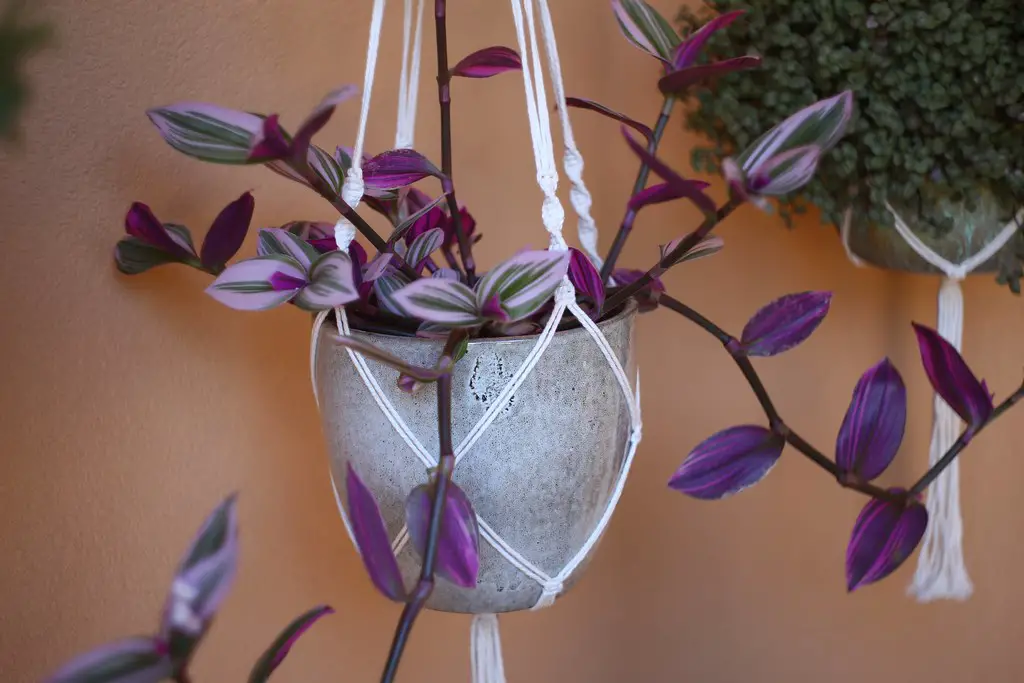Nanouk, scientifically known as Tradescantia ‘Nanouk,’ is a captivating houseplant characterized by its vibrant and colorful leaves. Its stunning appearance, marked by streaks of pink, magenta, green, and white, makes it a popular choice for adding a touch of color to homes and gardens.
The Tradescantia ‘Nanouk’ is part of the Tradescantia genus, well-known for its easy-care and hardy nature. It’s a hybrid plant developed in the Netherlands, designed to be robust, compact, and incredibly attractive. The succulent stems and glossy, striped leaves contribute to the aesthetic appeal of this unique cultivar.
Growing Nanouk is a rewarding experience, suitable for both novice and expert gardeners. It’s adaptable, resilient, and an excellent choice for indoor decoration. Whether placed on a sunny windowsill or hanging in a basket, the visual impact of Nanouk is undeniably eye-catching.
| Attribute | Details |
|---|---|
| Common Names | Nanouk, Fantasy Venice |
| Botanical Name | Tradescantia ‘Nanouk’ |
| Family | Commelinaceae |
| Plant Type | Perennial |
| Mature Size | 12-18 inches tall |
| Sun Exposure | Bright, indirect light |
| Soil Type | Well-drained, fertile soil |
| Hardiness Zones | 10-11 |
| Native Area | Hybrid, developed in the Netherlands |
Nanouk Care
Nanouk’s care routine is uncomplicated, making it a delightful plant for those new to gardening. It prefers bright but indirect sunlight and can adapt to different lighting conditions. Regular watering is needed, but the plant is quite forgiving if occasionally forgotten.
Soil should be kept slightly moist, and a balanced fertilizer can be applied during the growing season to support robust growth. Pruning may be done to maintain shape and encourage bushiness, and regular checking for pests can keep the plant healthy and vibrant.
Light Requirement for Nanouk
Nanouk thrives in bright, indirect sunlight. Too much direct sun can scorch the leaves, while insufficient light may cause fading of the vibrant leaf colors. A north or east-facing window is an ideal location.
Soil Requirements for Nanouk
Well-drained, fertile soil is best for Nanouk. A general-purpose potting mix, possibly with some added perlite for increased drainage, is typically suitable.
Water Requirements for Nanouk
Watering should be done when the top inch of soil feels dry. Over-watering can lead to root rot, while under-watering may cause wilting and loss of color vibrancy.
Temperature and Humidity
Nanouk prefers temperatures between 60-80°F (15-27°C) and can tolerate average indoor humidity levels. Avoid placing it near cold drafts or heating vents.
Fertilizer
A balanced, water-soluble fertilizer applied every month during the growing season can promote lush growth and vibrant coloration.
Pruning Nanouk
Pruning can be done to maintain shape and encourage bushiness. Pinching back the tips or cutting back leggy stems can lead to a denser, more attractive growth.
Propagating Nanouk
Nanouk can be easily propagated through stem cuttings. Simply cut a healthy stem below a node and place it in water or soil to root.
How To Grow Nanouk From Seed
Growing Nanouk from seed is not commonly practiced, as it’s typically propagated through stem cuttings.
Common Pests & Plant Diseases
Spider Mites
Spider mites can be controlled with insecticidal soap or neem oil.
Common Problems With Nanouk
Legginess
Leggy growth is often a sign of inadequate light. Moving the plant to a brighter location can remedy this issue.
Fading Leaf Color
Fading leaf color may indicate a lack of sunlight or nutrients. Adjusting the light conditions and fertilizing can restore vibrancy.
Pro Tips
- Place in bright, indirect light to maintain vivid leaf colors.
- Avoid over-watering to prevent root rot.
- Pinch back tips to encourage bushy growth.
- Propagate through stem cuttings for easy multiplication.
- Fertilize during the growing season for robust growth.




